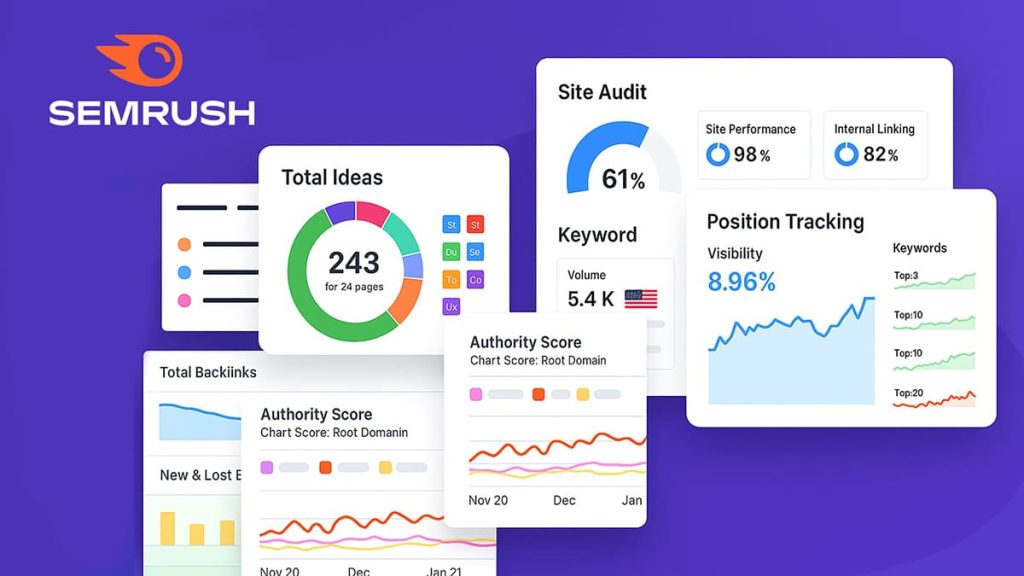I used to think picking an AI writing tool was just a checklist game. Price? Check. Templates? Check. Maybe something with a snazzy landing page and a “smart” badge slapped on top. But after testing way too many of them (some brilliant, some wildly overrated), I realized it’s not about features, it’s about fit. And that fit depends entirely on how you work.
Whether you’re a freelancer trying to move fast on a budget, part of a marketing team juggling tone and deadlines, or a solo creator just looking for something that doesn’t slow you down, the right tool will feel like an extension of your thinking, not another tab to manage.
This article isn’t a ranking or a tech comparison. It’s a hands-on look at how different tools support different work styles. And if you’ve ever opened five AI apps and closed them all with a sigh… this might help you finally choose one you’ll actually use.
Matching AI tools to your role
One thing I’ve learned working with dozens of teams and solo creatives is this: the best AI copy tool isn’t the one with the most buttons, it’s the one that actually fits into your day. And depending on who you are (or how you work), that “best” tool looks pretty different.
Let’s start with freelancers. When you’re juggling client briefs, deadlines, and invoices, you need a tool that’s lightning fast, affordable, and doesn’t slow you down with bloated features. For a while, I used Rytr during crunch weeks, not because it was fancy, but because it got the job done with minimal setup. It’s a solid pick when every minute (and dollar) counts.
Now jump to agencies. Tone consistency and collaboration become non-negotiable. I’ve worked inside content teams where Jasper really stood out, especially when several writers needed to work from the same brand voice library. Having custom templates and tone controls saved us from rewriting the same paragraph five times.
And for solo creators or startup marketers? Simplicity is king. You don’t want a dashboard that feels like mission control. You want clean outputs, support for different formats (email, blog, social), and just enough structure to keep things moving. GrowthBar fits that niche well, I’ve used it to build quick SEO drafts that didn’t feel robotic.
| Profile | Key Need | Suggested Tool |
|---|---|---|
| Freelancer | Speed + Low Cost | Rytr |
| Agency | Collaboration + Tone | Jasper |
| Blogger | SEO + Content Depth | GrowthBar |
“The best tool is the one your intern can master in 30 minutes.”, Content Strategist, DMI
Prompting smarter, not harder
If there’s one game-changer I wish someone had told me about earlier, it’s this: the magic of AI isn’t just in the tool, it’s in the prompt. The way you ask determines what you get. At first, I’d throw vague commands into the tool and wonder why the results felt… off. But once I started shaping my prompts like a creative brief, everything clicked.
Here’s an example. Don’t just say, “Write a product description.” Try:
“Write a persuasive product description (FAB) for a time-saving planner, tone: casual.”
That little shift? It moves the output from generic filler to something closer to publish-ready.
The trick is knowing your frameworks, because prompting with structure gives the AI direction. Here are three I use regularly, especially when working fast:
- AIDA (Attention, Interest, Desire, Action) – Ideal for punchy product promos
- PAS (Problem, Agitate, Solution) – My go-to for landing pages or pain-point-driven copy
- FAB (Features, Advantages, Benefits) – Best for ecommerce or detailed product descriptions
Want to summarize a long blog? Try:
“Summarize this blog in 3 bullet points with a witty tone.”
Or rework an email intro?
“Rewrite this email intro using AIDA for overwhelmed marketers.”
It’s not about tricking the tool, it’s about speaking its language. And once you get the hang of that, the results feel a lot more… human.
Tool fit by output type
Not all AI tools are created equal, and honestly, that’s a good thing. Because when you stop looking for a “one-size-fits-all” solution and start matching tools to the type of content you’re actually producing, everything gets easier.
Let’s say you’re writing emails. You need clarity, brevity, and a tone that hits just right. That’s where Copy.ai shines. I’ve used it to rework dry product updates into friendly, high-converting messages, and it’s especially good at adjusting tone across audiences (clients vs. customers, for instance).
But when it comes to blog posts, the game changes. You’re managing structure, SEO, and reader flow. That’s why I keep coming back to GrowthBar. I remember shaving my writing time from five hours to just two, not by rushing, but because its built-in SEO outline basically held my hand through the process. The GPT-4 writing engine isn’t just smart, it’s strategically smart.
Now switch gears to social media, where speed and variety matter more than anything else. Peppertype.ai feels like a brainstorming buddy that doesn’t get tired. It’s not perfect, but for quick bursts of content (especially when I’m batch-creating captions), it gets the job done with minimal cleanup.
| Output Type | Best Tool | Why It Works |
|---|---|---|
| Email copy | Copy.ai | Shortform & tone control |
| Blog posts | GrowthBar | SEO optimization + GPT-4 writing |
| Social posts | Peppertype.ai | Quick idea bursts |
And if you’re looking to go deeper into optimizing your content flow, especially with frameworks and prompt types, you might want to explore this guide on writing smarter with AI. It breaks down the logic behind tool + prompt pairing better than I can here.
What to avoid when choosing
It’s easy to get swept up in flashy demos and endless feature lists, I’ve been there. A tool promises “200+ templates” or “SEO magic,” and suddenly it feels like the obvious choice. But here’s the truth: most regrets I’ve heard (and made myself) come from rushing that decision.
Here are a few common pitfalls to watch out for:
- Prioritizing features over usability, A powerful tool is useless if it’s a pain to use.
- Ignoring tone consistency, Some tools generate technically correct copy, but the tone swings wildly across sections.
- Choosing tools that don’t support integrations, If it doesn’t plug into your CMS, doc editor, or workflow, it’s extra work.
- Not checking output quality, Look for overly robotic phrasing, repetition, or tired clichés in sample outputs.
My best advice? Test your top choices with a personal prompt before committing. Don’t just copy a template, throw in a real challenge: a tricky blog intro, an awkward product to describe, a sarcastic social caption. That’s where the real differences show up.
In the end, finding the “best” AI copywriting tool is a bit like finding the perfect notebook or keyboard, it’s personal. The flashiest tool won’t help much if it doesn’t align with your actual workflow. And the simplest one might surprise you by quietly becoming your go-to.
Start with how you write, what you need most (speed, tone, format?), and how much friction you’re willing to tolerate. Test with a prompt you actually care about. Pay attention to how it makes you feel, does it make writing smoother, or just… different?
What about you? Found your perfect match yet, or still testing the waters? Drop your favorite (or most frustrating) AI tool in the comments. I’d love to compare notes.








